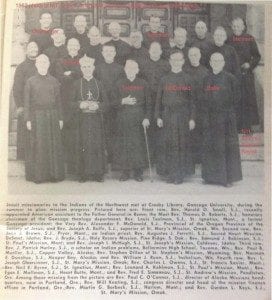By TIM KOSNOFF
“In Plain View,” an article in the latest (Sept. 24, 2012) issue of The New Yorker Magazine, ostensibly is about the world’s current most infamous sexual abuser of children, Jerry Sandusky.
No doubt there are a 1,001 lessons being learned from this case. And we welcome the media spotlight on the social scourge that is child sexual abuse.
Malcolm Gladwell’s piece is pitch perfect because it so deftly gets at what we battle daily: How do child molesters get away with it? How do they escape detection, prosecution and often continue to abuse scores of victims over a lifetime? “In Plain View: How Child Molesters Get Away With It” describes much of what we see in our casework, with textbook accuracy.
Abusers get away, more often than not, because of enablers. Enablers are those who, for various reasons, simply can’t bring themselves to believe that pedophiles, suspected or accused or maybe even arrested-and-convicted, could have possibly done such things.
Gladwell recounts the case of a charismatic young Canadian grade-school P.E. teacher thought to have sexually molested boys. Despite suspicions of parents and evidence from victims, the teacher’s peers said they just couldn’t believe he was capable of such behavior. When the teacher threatened to sue parents of an alleged victim, the parents decided to drop their charges.
The Gladwell piece is accurate in its description of the typical modus operandi of a child molester — selecting possible victims, grooming them, etc.
But pedophiles also count on support from enablers: those who rise to their defense for no better reason than because observers believe it’s impossible for such people to commit the crimes. The Canadian teacher, after all, was an apparently happily married young man, as though that alone somehow was enough to eliminate him from suspicion and contradict the evidence presented by victims.
Or, just as bad, persons well-known in public enjoy reputations based on little more than their own accomplishments. Sandusky? Well, didn’t he make the exemplary effort to launch the charity Second Mile for the benefit of needy kids (never mind that the “selfless” gesture was in retrospect calculated precisely to provide him with easy access to young boys)? Wasn’t he, in fact, such a legendary good guy that Second Mile was cited in 1990 as recipient of a “Points of Light” plaudit from President George H.W. Bush?
When child-molesters have thus been honored in public, those who don’t know any better feel inclined to further deify them
The New Yorker article recalls a particularly ironic passage written by Bill Lyon of the Philadelphia Inquirer paying tribute to Sandusky’s apparent selflessness:
“In more than one motel hallway, whenever you encountered him and offered what sounded like even the vaguest sort of compliment, [Sandusky] would blush and an engaging, lopsided grin of modesty would wrap its way around his face. He isn’t in this business for recognition. His defense plays out in front of millions. But when he opens the door and invites in another stray, there is no audience. The ennobling measure of the man is that he has chosen the work that is done without public notice.”
Perhaps one makes particular note of Lyons’ unfortunate uses of the phrases “no audience,” “without public notice” and “invites in another stray.”
As to the notion of youthful victims giving “notice” to authorities about sex predators, we’ve seen the futility of such efforts. What’s particularly difficult for prosecutors or even attorneys representing victims in civil cases: taking the word of a minor over the word of an adult. Recently, we had a call from a prospective client from out of state whose child was abused in the restroom of a church during Sunday school by an adult who was supposed to be supervising the kids. The alleged abuser was an attorney. The case was taken to police but local prosecutors declined to prosecute.
So, what are we left with? We have the word of a minor against the word of an attorney (make that “Attorney” with a capital “A”) — that, and no criminal conviction. In this way, the pool of enablers extends beyond the disbelieving acquaintances and clueless, sycophantic reporters and award-givers. Enablers include the very public officials whose job it is to see to it society is protected from such sexual predators.
If someone you know needs help, you can contact us:
Our attorneys are highly experienced in childhood sexual abuse law and offer free initial consultations to potential clients. We are also willing to assist other attorneys in sexual abuse cases. Please call 206-257-3590, or email us directly. Conversations will be kept confidential, and even if you are unsure about a lawsuit, often we can direct you to the assistance you need. You will be treated with compassion and respect.
Toll free: 855-529-4274
Tim Kosnoff, direct: 425-837-9690
Dan Fasy, direct: 206-462-4338
Kosnoff Fasy, Seattle office: 206-257-3590

